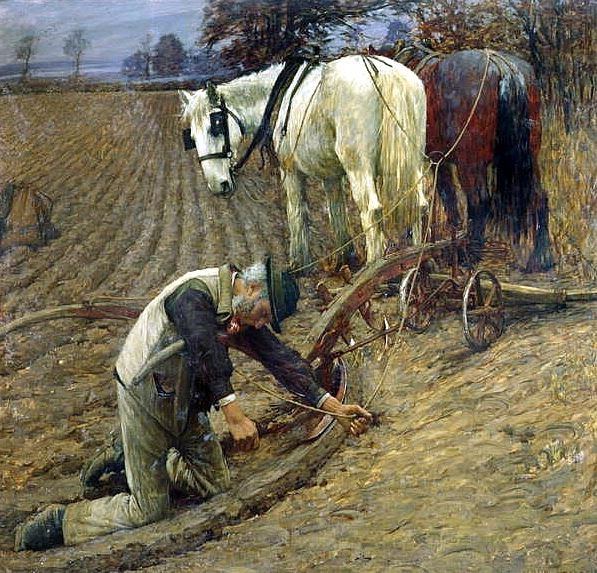Discover Subsistence Farming Colonies

Imagine a time when every meal you ate, every piece of clothing you wore, and every tool you used was crafted by your own hands. Welcome to the world of colonial America, where subsistence farming was the lifeblood of colonial agriculture and the backbone of early American farming.
The Essence of Farming Self-Sufficiency
In the midst of untamed wilderness, early American colonists learned the skills necessary to sustain themselves. They tilled the soil, planted seeds, and harvested fruits and vegetables with meticulous care. This was not just a way of life; it was a matter of survival.
Every Seed Holds a Story
Each seed these early settlers planted represented hours of labor and a future filled with promise. They needed to grow enough food to feed their families and animals and to store away for leaner times. Corn, beans, and squash, often called the "Three Sisters," were staples in their diets. They also cultivated wheat, rye, and barley for bread and beer, respectively.
The Land’s Gift to the Colonists
Colonial life was harsh, but the land was generous. The colonies were blessed with rich soil and a relatively mild climate. However, it was not without its challenges. Droughts, pests, and unpredictable weather patterns tested the colonists' resilience and ingenuity. They had to protect their crops from marauding animals and insects while also ensuring they had enough feed for their livestock.
Historical Colonial Life: From Daybreak to Sunset
Life in the colonies revolved around the cycles of nature and the rhythms of farming. Diaries and journals from this era tell us that colonists awakened before dawn to tend to their fields. They worked from sunup to sundown, with periodic breaks for meals and rest. Their days were filled with the backbreaking labor of breaking new land, planting crops, and keeping animals.
Hard Labor and Enduring Rewards
Think of each piece of earth they tilled, fertilized, and sowed like a piece in a complex puzzle. Every action was calculated to ensure maximum yield. The reward for their effort was not just food but a sense of accomplishment and independence. They did not rely on store-bought items but produced almost everything they needed. This self-sufficiency was a point of pride for early Americans.
The Tools of Trade in Early American Lifestyle
The tools they used were simple yet effective. Plows, hoes, and scythes were among the essential tools for farming. They often made these tools from locally sourced materials, showcasing their creativity and resourcefulness.
Saving for the Hard Times
A critical part of subsistence farming was storing enough food to last through the winter. Colonists preserved their harvest by drying, pickling, and canning. Root cellars and smokehouses were integral parts of their homes, offering a way to keep perishables fresh. This foresight ensured that even in the harshest winters, they had sustenance.
The Circle of Life
The circle of life in these colonies was a continuous loop of planting, harvesting, storing, and repeating. They grew food to feed their families and animals, who in turn provided labor and sustenance. This cycle of giving and receiving was a fundamental aspect of their existence and reflects the interconnectedness of life.
Farming Self-Sufficiency: A Legacy of Resilience
Today, we can learn a lot from the resilience and self-sufficiency of these early settlers. In an age of convenience and instant gratification, their example serves as a reminder of the value of hard work and resourcefulness. Have you ever wondered what it would be like to rely solely on what you can grow and make yourself?
Anchored in the Past, Inspired for the Future
Perhaps we can take inspiration from their determination. Whether it’s starting a small garden, learning to can food, or simply appreciating the effort that goes into cultivating a meal, these practices can enrich our lives and deepen our connection to the land.
Want to know more about the struggles and triumphs of subsistence farming in colonial times? Consider exploring articles and books on historical colonial life to deepen your understanding of early American lifestyles. Dive into the stories of colonial America and discover how these pioneers shaped our agricultural and cultural legacy. Read more about colonial agricultural strategies.
The next time you sit down for a meal, take a moment to appreciate the journey of that food from the earth to your plate. It is a testament to the hard work and ingenuity of those who came before us.
Frequently Asked Questions
FAQ 1: What Were the Main Crops Grown in Subsistence Farming Colonies?
Colonists primarily grew corn, beans, squash, wheat, rye, and barley. These crops formed the foundation of their diet and provided necessary nutrients and calories.
FAQ 2: How Did Colonists Preserve Their Food for Winter?
Colonists used techniques such as drying, pickling, and canning to preserve their food. They also stored food in root cellars and smokehouses to keep it fresh through the winter months.
FAQ 3: What Tools Were Used in Early American Farming?
Early American farmers used simple yet effective tools like plows, hoes, and scythes, often made from locally sourced materials. These tools were essential for tilling the soil, planting, and harvesting crops.
FAQ 4: How Did Subsistence Farming Impact Colonial Life?
Subsistence farming was the backbone of colonial life. It provided food, ensured self-sufficiency, and taught valuable skills in agricultural practices and resource management.
FAQ 5: What Can We Learn from Subsistence Farming Practices?
We can learn about the importance of hard work, self-sufficiency, and resourcefulness. Subsistence farming practices highlight the value of growing and preserving food and the interconnectedness of life.
```
0 Response to " Discover Subsistence Farming Colonies"
Post a Comment